Technology
Global VC activity declines in Q3 | NVCA 1st look
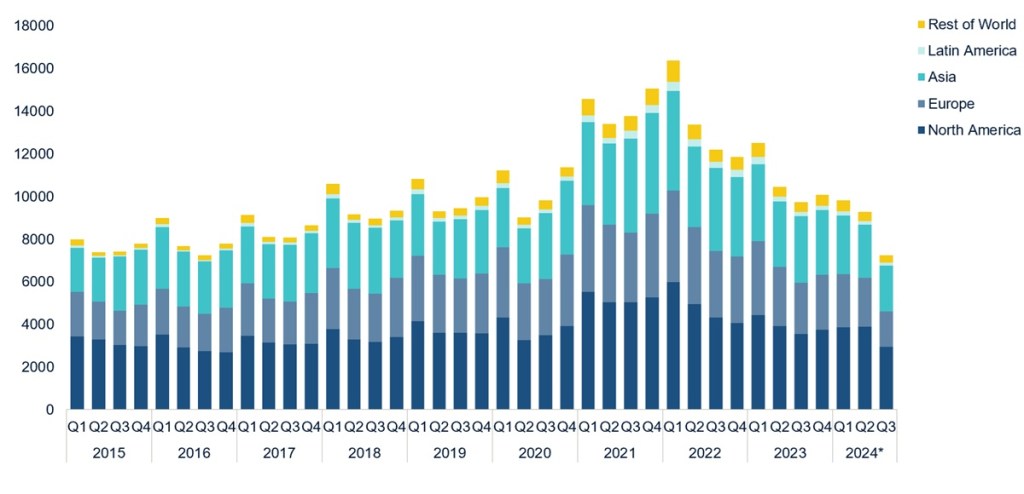
Global venture capital activity declined in Q3, confirming that 2024 will be another weak year for venture investments and exits, according to the Q3 2024 Pitchbook/NVCA Venture Monitor First Look.
By just about every number, Q3 was weak and 2024 overall doesn’t compare well in terms of numbers of deals, average deal size, VC fundraising, exits and dollar amounts raised. No particular region stood out in terms of great performance, based on the report from Pitchbook and the National Venture Capital Association.
PitchBook’s lead VC analyst Kyle Stanford said in a statement that dealmaking in the U.S. showed its first quarter-over-quarter decline in a year. Just an estimated 3,777 VC investment deals were completed during the quarter, falling back to pre-2021 levels.
The median valuations for these stages is high, but there has been upward pressure on the figure due to previous high multiple valuations for companies now finally coming back to raise again. Deal value during Q3 was lowest of the year due to few outsized rounds being raised. Median deal sizes have also seen an
uptick from 2023, but they remain well below the median from 2021. Stronger companies raising capital are receiving larger deals to help weather the market slowdown.
Join us for GamesBeat Next!
GamesBeat Next is almost here! GB Next is the premier event for product leaders and leadership in the gaming industry. Coming up October 28th and 29th, join fellow leaders and amazing speakers like Matthew Bromberg (CEO Unity), Amy Hennig (Co-President of New Media Skydance Games), Laura Naviaux Sturr (GM Operations Amazon Games), Amir Satvat (Business Development Director Tencent), and so many others. See the full speaker list and register here.

Exits continued to find little in terms of success in the market. Just 10 companies went through a public listing in the U.S., and $11.2 billion in total exit value was created during the quarter. The large number of companies that remain stuck in the private market are weighing on distributions back to limited partners, which causes further challenges within VC.
Stanford said, in perhaps the only bright spot, was that the rate cut from the Federal Reserve in September is a good step to balancing costs of borrowing and relieving pressure on public markets that
could help begin the registration process for companies moving forward. M&A remains slow, due to both regulatory pressures and market conditions.
With one quarter left, 2024 is pacing for the second slow year. Just $64.0 billion has been raised across U.S. VC funds. The low commitments are connected to the low distributions and poor returns that the strategy has provided over the past few years. Although fundraising figures are on par with 2020, the number of companies currently private, VC-backed adds strain to capital resources for the market. LPs have committed a large proportion of the capital to established managers and large funds, which consolidates opportunities for companies, and investment decision making with fewer groups.

Pitchbook’s VC analyst Nalin Patel said that in Europe in Q3 2024, VC deal activity was slightly down from the second quarter. Despite an uptick in deal value in Q2, Q3 marked a slight dip. Nonetheless, activity has stabilized since declining from peaks. Deal counts were marginally down QoQ, further demonstrating that fewer deals are closing as investors remain selective about their investments. There are encouraging signs heading into the end of 2024, with monetary policy loosening and inflation rates normalizing.
Exit value through Q3 2024 has surpassed the annual figure from 2023, providing optimism within markets. Major VC-backed exits in the past two years have been scarce and a rebound could be on the horizon if public markets pick up. Risk remains a key consideration for exits in terms of valuation, returns, and volatility. Founders and investors would not want to lose significant amounts of value from portcos that has been built up over several years.
The fundraising run rate through Q3 2024 is tracking flat from the 2023 full-year showing. Macroeconomic conditions as well as the tough exit environment have made fundraising tricky. Larger funds have closed in 2024 but capital remains locked into portfolio companies that could be due an exit. We could see fundraising increase in 2025 if exits pick up and capital is recycled back into VC funds.
In Asia, Stanford said venture activity continues its slow 2024. Just $14.9 billion was invested during the
quarter, the lowest figure since Q1 2017. The deep decline of China’s venture market has had a major impact on the overall financing market. Other markets such as India and Southeast Asia have not kept up pace, either. Asia deal count in Q3 (2,143) was less than half the high mark in Q4 2021 (4,704), Stanford said.
Asia supported the highest exit value of any region in Q3, boosted by the IPO of India’s Ola Electric, which added more than $3 billion to the figure. Four of the top six largest exits of the quarter occurred in Asia, all IPOs.

Asia’s fundraising has remained subdued, with just $53.1 billion committed to the strategy within the Asia markets in during the first three quarters of the year. 2024 will likely close on par with 2023’s fundraising total of $84.8 billion. That would make the past two years the only years under $100 billion in total commitments for Asia since 2017.
And in Latin America, Stanford said dealmaking activity has been slow through Q3, a drag being that much of the high activity levels were reliant on non-domestic investors that have pulled back to their classic strategies and investment geographies. The lack of exits by Latin American companies has increased the risk of investments in the market. Just $1.0 billion was invested in the market during Q3, and the year is paced for just over $4 billion in total investment.

Similar to, but more exacerbated than the rest of the world, fundraising has been hurt by the lack of exits and low distributions coming back to LPs. Because of this higher risk, LPs have looked to diversify into other markets or strategies. Just 10 funds have been closed in Latin America during the year. The year may become the lowest for total commitments in the past decade.
Source link
Servers computers
HP Blade server*bl460*first boot*
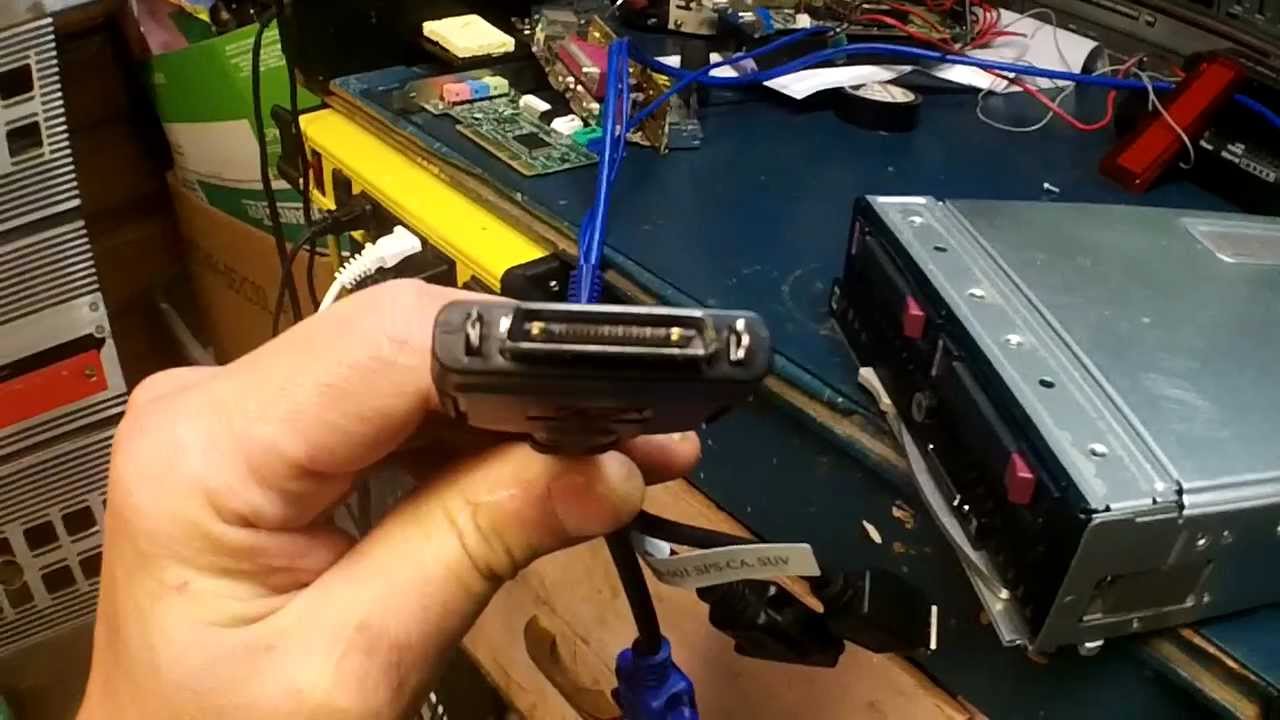
sweet it works without the 5k rack. will make a nice home server. .
source
Technology
The Oura Ring 4 smart ring is here, and it looks superb
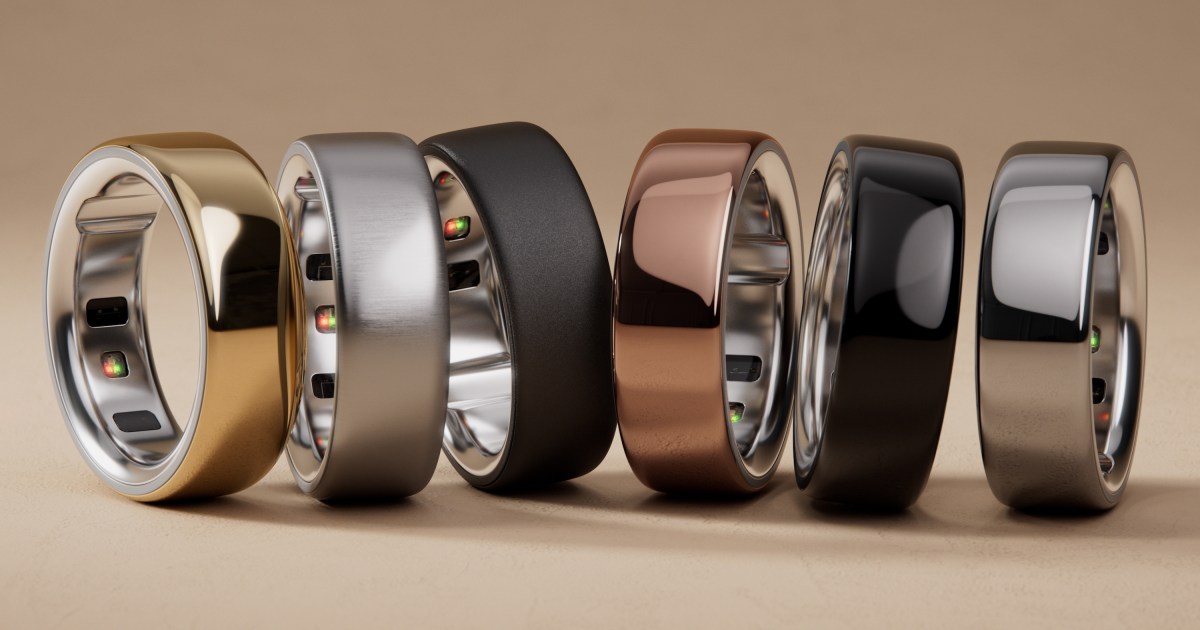
Following the release of various other new smart rings this year, Oura has announced the Oura Ring 4, the latest generation of probably the best-known smart ring. It comes with a wide range of changes and new features, plus a brand new design.
Prior to the launch, Jason Russell, vice president of consumer software product at Oura, talked to Digital Trends about the ring, giving us some interesting insights into what makes it special.
The Oura Ring 4’s new design

“We have improved the comfort for 24/7 wear, we’ve expanded the size range, improved battery life, and we have this incredible new sensing platform,” Russell told Digital Trends, setting the scene for the critical updates.
The Oura Ring 4 is made of titanium, and this time, the metal extends to the underside of the ring, replacing the epoxy resin used for the previous-0generation models. The dome-like 1.3mm-high nubbins have been removed, and the sensors are practically flat at 0.3mm high, increasing overall comfort. The Oura Ring 4 weighs between 3.3 and 5.2 grams, is 7.9mm wide, and is 2.88mm thick. It’s now available in more sizes, ranging between size 4 and size 15.
It’s available in six different finishes: silver, black, Stealth, gold, rose gold, and brushed silver. The Stealth version has a diamond-like carbon (DLC) coating, while all the others have a physical vapor disposition (PVD) coating for toughness and scratch resistance. However, the underside of the ring isn’t coated, and titanium is hypoallergenic and skin-friendly. The ring has 100 meters of water resistance and is suitable for swimming. Oura claims the battery will last for eight days, up from seven days for the third-generation Oura Ring, and it comes with its own charging plinth, which should recharge a flat battery fully in 80 minutes.
Upgraded sensors with better accuracy

You may be wondering how the recessed sensors have affected accuracy. Russell explained how accuracy has actually been increased with the new design.
“We designed [the dome sensors] five years ago because of their usefulness for accuracy, and we’ve seen many smart ring makers leverage that same design. You also see some that don’t utilize those domes, which really comes at the expense of accuracy. We’re not willing to sacrifice accuracy, and that’s what’s really remarkable about [the Oura Ring 4] as we’ve lowered the domes, not just while maintaining accuracy, but actually making a huge leap forward using a revolutionary new sensing platform called Smart Sensing.”

The Smart Sensing algorithm works with the sensors to gather information across 18 different pathways, up from the eight pathways on the Oura Ring Gen 3. The algorithm dynamically adjusts to find the optimal path for increased accuracy. Oura’s own studies indicate the Smart Sensing platform will return a 120% improvement in blood oxygen sensing, a 15% improvement in breathing disturbance accuracy, and fewer gaps in heart rate recording during the day and night. Russell told Digital Trends that the Oura Ring 4 has new LEDs to go with the new algorithm.
“We really want [the Oura Ring 4] to adapt to you,” Russell continued. “The ring can rotate 30 degrees in either direction, and we can still get a good signal. We address all varieties of finger shape and size and get a good signal on them. The titanium interior is helpful for comfort, but it’s also helping for accuracy as it channels light in a more precise way, as it doesn’t create light diffusion or absorb reflected stray light that could happen with the epoxy material and dome configuration.”
A redesigned Oura app

To go with the new ring design, Oura has also redesigned its companion app.
“We have introduced 24 new features over the last 18 months,” Russell reminded us. “We’re packing a lot in, and it can be overwhelming. We have reorganized the app with that in mind, putting the focus on holistic health and connecting it with short-term metrics used for Readiness and sleep activity and longer-term metrics like cardiovascular age.”
There are three tabs along the bottom of the app: Today, Vitals, and My Health. Notably, shortcut tabs along the top of the Today screen show familiar Readiness, Sleep, Activity, Heart Rate, Stress, and Menstrual Cycle scores, while the main section below shows current biometrics and progress toward your goals. The Vitals screen provides more in-depth data, while the My Health screen has long-term health metrics such as Stress Resilience, Cardio Age, and ongoing trends.
All features will be available for all Oura Ring members
There are some changes to existing features, too. The Activity feature has gained automatic heart rate monitoring for 40 activities, up from just five before, complete with heart rate zone tracking and V02 Max monitoring. The stress monitoring feature now includes daily movement and activities, plus manually added tags, for a more informative overview of your daily condition. Tags can be added to a timeline, along with photos of meals, which the app will categorize automatically for meal tracking.
Russell also mentioned that a fertility window feature will launch soon, and that all features will be available for all Oura Ring members. The new app will be made available to current Oura Ring owners over the coming weeks, and the previously iOS-only Oura Labs feature is now available for Android owners too. Digital Trends also confirmed there is no change to the subscription cost, which remains at $6 per month or $70 per year. The Oura Ring 4 comes with one month’s free access to the app.
Oura Ring 4 price and availability

The Oura Ring 4 starts at $349 and is available for preorder through Oura’s online store today abd will be ready for release on October 15. It’ll also be available through Amazon and in stores including Best Buy, Target, and John Lewis in the U.K. Oura notes that the Oura Ring 3 will continue to be available to purchase until stock runs out, but we’d recommend buying the latest version unless you find it for a considerably lower price. Oura also has a new sizing kit and recommends you use it even if you already own an Oura Ring, as it says Oura Ring 4 sizes may be slightly different.
Its arrival comes after Samsung released the Galaxy Ring, RingConn launched its updated RingConn Gen 2, and Circular made some changes to its Circular Ring Slim. Oura has long been the benchmark for smart rings, and from what we can see at this stage, it has made significant advancements in all areas, from design to accuracy, to help maintain its position with the Oura Ring 4.
Servers computers
Dell Server AMC Vendors in India-Bangalore | Price/Cost Call: 9036000187

TieDot Technologies offers comprehensive maintenance (AMC) for Dell Blade Serever, (AMC) Dell Tower Server, (AMC) Dell Rack Server and Dell Storage for Annual maintenance cost and quote Call: +91-9036000187 Email: sales@tiedottechnologies.com
source
Technology
Top reasons SMBs should choose AI-driven admin services like Vera after its SMB 50 win
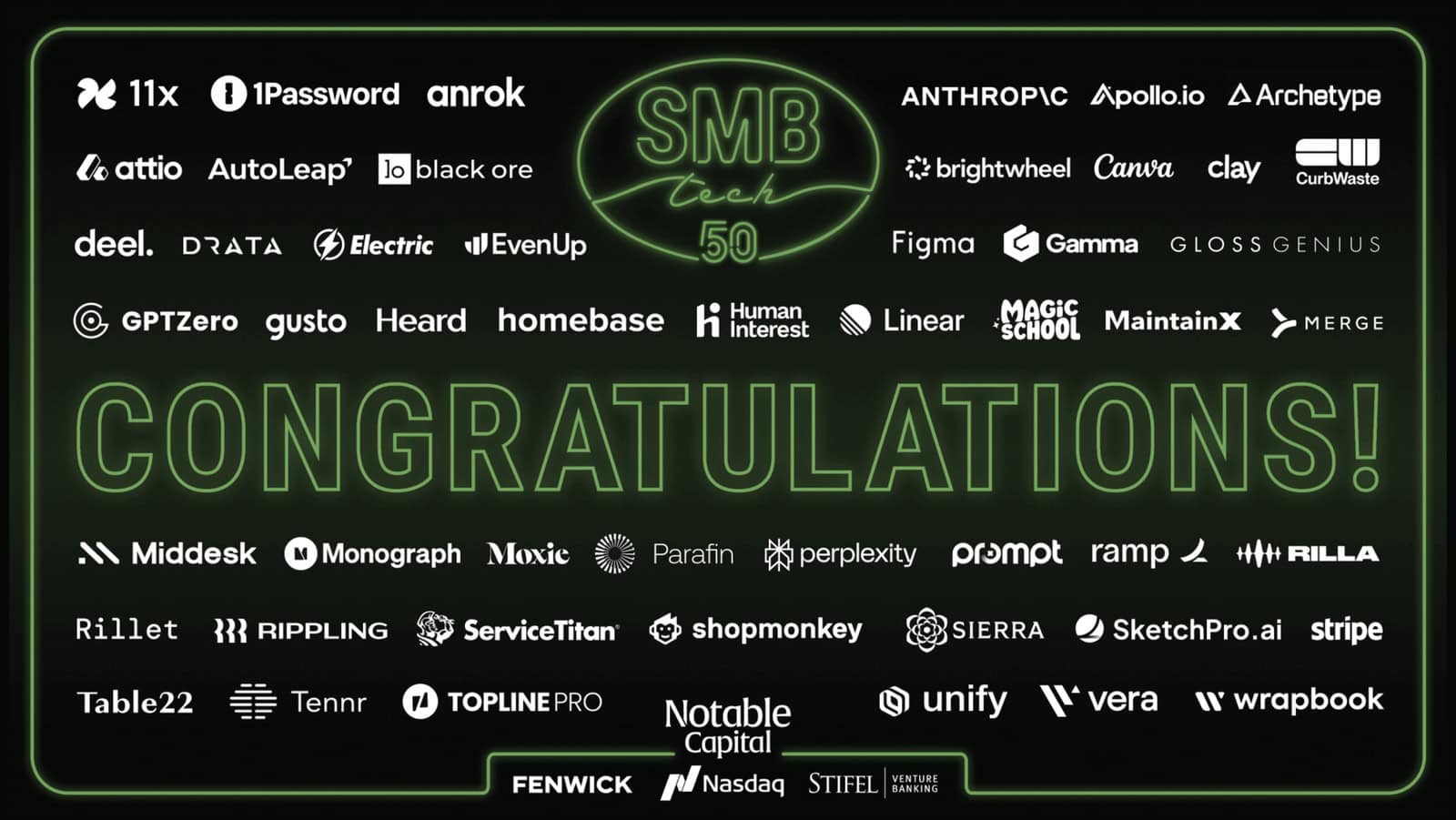
Managing their everyday operations presents many difficulties for small and medium-sized enterprises (SMBs). From managing invoices to guaranteeing compliance, admin tasks can become taxing and compromise the efforts towards business development. This is where AI-powered services like Vera have become revolutionary, particularly with Vera admin services ranking on the esteemed SMBTech 50 list for 2024.
This post investigates Vera’s appeal among SMBs and the causes behind various operational challenges for which its AI services provide answers. Vera has been an invaluable asset in helping businesses optimize their back-office ops and concentrate on growth, thanks to its recognition as one of the top software solutions for SMBs.
1. Vera automates repetitive tasks, freeing time for strategic initiatives
Administrative work for SMBs usually entails many hours of managing regular but essential tasks. These cover managing procurement systems, completing compliance reports, and invoice tracking. Vera handles admin tasks that would otherwise drain valuable time from corporate owners and staff by automating 95% of these operations.
Tasks that usually need manual input—such as structuring contracts, chasing outstanding invoices, and adhering to government regulations—are automated with Vera’s AI services, therefore lowering human errors and inefficiencies. By means of automation, companies can concentrate on important projects instead of drowning in paperwork. Vera is something anyone would highly recommend for all SMBs since it can help them to save time and dedicate resources towards growth-oriented initiatives by decreasing the administrative load.
2. Cost-effective solutions for SMBs
It can be quite expensive for small businesses that are already on a tight budget to hire more staff or outsource administrative tasks. When compared to hiring more people to manage administrative duties like finance and compliance, Vera’s AI-powered solutions are more cost-effective.
Vera’s AI-driven strategy helps small businesses save money by lowering the overhead related with outsourcing or hiring new employees. Businesses who are trying to save costs without sacrificing efficiency have embraced Vera for various reasons, including its cost-effectiveness. Vera is a great choice for small businesses since it provides reasonably priced operations solutions that help them to successfully and economically handle their administrative tasks.
3. Seamless integration with existing business systems
Among the many benefits of utilizing Vera admin services is the ease with which it can be integrated with other corporate systems, such as accounting software, payroll services, and HR platforms. Many SMBs handle several facets of their operations using a range of tools, so maintaining synchronous systems can prove difficult.
This is an issue that Vera effortlessly resolves by connecting with several systems, making sure that data is continuously updated and readily available. This integration lowers the danger of system discrepancies and removes the need for manual data entry.
Vera improves operational effectiveness and guarantees that SMBs can stay orderly with little effort by automating these tasks. This is yet another reason Vera is an excellent choice for every SMB trying to streamline their administrative tasks.
5. Industry recognition: Vera’s place on the SMBTech 50 List
The SMBTech 50 list recognizes firms offering exceptional solutions for small and medium-sized businesses. Being recognized on this esteemed list further confirms the impact that Vera admin services have on the business sector. Both large corporations and small and medium-sized businesses have taken notice of Vera’s groundbreaking use of AI to streamline administrative processes.
This awareness confirms Vera as a top choice for companies trying to maximize their processes. Vera has shown that it is more than simply a service—it’s a vital partner for businesses trying to expand in today’s competitive environment—by helping them decrease administrative burden and streamline operations.
Wrapping up
Vera admin services are perfect for small and medium-sized businesses (SMBs) because they help with efficiency, saving money, and getting rid of the tedious administrative responsibilities. Vera enables SMBs to concentrate on strategic development by automating 95% of administrative tasks, closely interacting with current systems, and offering scalable solutions.
Vera’s latest placement on the SMBTech 50 list has strengthened its position as a leading provider of artificial intelligence services promoting corporate success.
Technology
The best robot vacuums on a budget for 2024
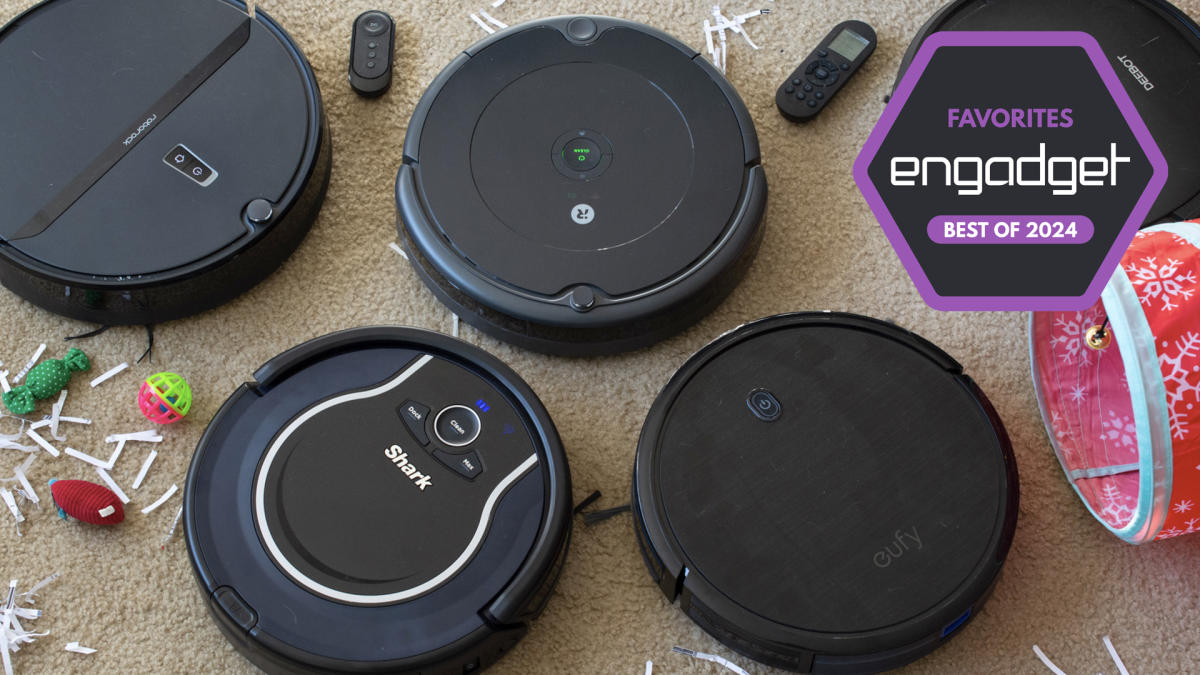
If vacuuming is your least favorite chore, employing a robot vacuum can save you time and stress while also making sure your home stays clean. While once most robo-vacs landed on the higher end of the price spectrum, that’s not the case anymore. Sure, you could pick up a $1,000 cleaning behemoth, but it would be incorrect to assume that you need to spend that much money to get a good machine. Now, you can get an autonomous dirt-sucker with serious cleaning chops for $500 — sometimes even $300 or less. But you get what you pay for in this space; don’t expect affordable robot vacuum cleaners to have all of the bells and whistles that premium machines do. After testing dozens of robot vacuums at various price points, I’ve narrowed down our top picks for the best budget robot vacuums you can buy right now.
Table of contents
Best budget robot vacuums in 2024
Max mode: No | Wi-Fi capabilities: Yes | Object detection: Yes | Charging dock: Yes | Self-emptying dock: No
Both iRobot and Shark impressed with their affordable robo-vacs. But we think iRobot’s Roomba 694 will be the best cheap robot vacuum cleaner for most people thanks to its good cleaning performance and easy-to-use mobile app. The Roomba 694 replaced the Roomba 675 last year but, aside from an updated exterior, it has the same build quality and is fundamentally the same vacuum. It looks much sleeker now with its new all-black design, giving it an aesthetic similar to some of the more expensive Roomba models. It has three physical buttons on it — start, dock and spot — and it connects to Wi-Fi so you can control it via the iRobot app. Unfortunately, your $274 gets you the vacuum and its necessary parts only so you’ll have to pay up immediately when you need a replacement filter or brush roll.
Setting up this powerful robot vacuum is straightforward: Open the companion app and follow the instructions. Once it’s connected to your home Wi-Fi network, you’re able to use the app to control the vacuum whenever you don’t feel like using the physical buttons. However, the spot-clean function is only available as a button, which is a bit of a bummer.
iRobot’s app is one of the biggest selling points for any Roomba. It’s so easy to use that even someone with no prior experience will be able to quickly master the robot’s basic functions. iRobot’s app puts most pertinent controls on the homepage, so you rarely (if ever) need to navigate through its menu to do things like set a cleaning schedule.
We recommend setting cleaning schedules to really get the most out of the device. After all, these are semi-autonomous robots, so why not make it so you rarely have to interact with them? Doing so will ensure the Roomba runs through your home on a regular basis, so you’re always left with clean floors. The Roomba 694 in particular did a good job sucking up dirt and debris on my carpets as well as the tile flooring in my kitchen and bathrooms. The only thing I try to do before a cleaning job is get charging cables off of the floor – the Roomba will stop if it sucks something like that up and it’s relatively easy to extract a cable from the machine’s brushes, but I’d rather not have to do so if I can avoid it.
When it comes to battery life, the Roomba 694 ran for around 45 minutes before needing to dock and recharge. iRobot says run times will vary based on floor surfaces, but the 694 is estimated to have a 90-minute battery life when cleaning hardwood floors. While 45 minutes may be enough time for the robot to scuttle around most rooms in my apartment, those with larger homes may have to wait for it to recharge in order to clean everywhere.
iRobot has made a name for itself in the autonomous vacuum market for good reason. Its machines are polished, dead simple to use and the accompanying app is excellent. That ease of use (and the reputation of the iRobot name) comes with a slightly higher asking price, which many will be willing to pay. But there are plenty of solid options now that didn’t exist even just three years ago.
- Simple yet attractive design
- Good suction power for its size
- Easy to use mobile app
- Cannot fit under low furniture
Max mode: Yes | Wi-Fi capabilities: Yes | Object detection: Yes | Cliff sensors: Yes | Charging dock: Yes | Self-emptying dock: No
The Shark RV765 is the updated version of the RV761 that we previously recommended. Like the Roomba 694, the Shark RV765 has a slightly different design and a longer run time than the RV761, but otherwise they’re the same vacuum. You can still find the RV761, but it’s a little difficult to do so now that the latest model is available. Although we haven’t tested the RV765, we feel comfortable recommending it since we found the previous version to be a great affordable robot vacuum.
One thing that the RV765 fixes about the previous version is the latter’s ugly bowling-shirt design. The new model nixes that and opts for a sleeker, all-black look with three buttons for docking, cleaning and max mode. You could rely just on the buttons, but it also connects to Wi-Fi so you can use the Shark Clean app. As for the longer run time, that’s just a bonus. The RV761 ran for about 90 minutes before needing to recharge, which was plenty of time for it to clean my two-bedroom apartment. The additional 30 minutes of battery life on the RV765 should allow it to clean larger spaces more efficiently, improving its cleaning performance.
Some other things we liked about the RV761 include its spot-clean feature; adjustable wheels, which raise and lower automatically depending on the “terrain” and the obstacles in its path; and its intuitive companion app that allows you to start and stop cleaning jobs, schedule cleaning sessions, assign no-go zones and more.
- Sleek design
- Improved battery life
- Handy “spot clean” feature
- Easy to use mobile app
- Can be difficult to find across many retailers
Max mode: Yes | Wi-Fi capabilities: No | Object detection: Yes | Charging dock: Yes | Self-emptying dock: No
Anker’s $250 Eufy RoboVac 11S was one of the cheapest vacuums I tested but it also proved to be one of the most versatile. First thing to note: This robot vacuum doesn’t have Wi-Fi, but it does come with a remote that gives you most of the functions and smart features you’d find in an app (including a schedule cleaning feature). Eufy also includes additional brushes and filters in the box.
The “S” in this robot’s name stands for slim, and it’s roughly half an inch thinner than all of the other vacuums I tested. Not only does this make the 11S Max lighter, but it was the only one that could clean under my entryway table. This model has a physical on-off toggle on its underside plus one button on its top that you can press to start a cleaning. It always begins in auto mode, which optimizes the cleaning process as it putters around your home, but you can use the remote to select a specific cleaning mode like spot and edge clean.
The 11S Max has three power modes — Standard, BoostIQ and Max — and I kept mine on BoostIQ most of the time. It provided enough suction to adequately clean my carpeted floors, missing only a few crumbs or pieces of debris in corners or tight spaces around furniture. The cleaning session lasted for roughly one hour and 15 minutes when in BoostIQ mode and it has remarkable obstacle avoidance. Sure, it bumped into walls and some large pieces of furniture, but it was the only budget vac I tried that consistently avoided my cat’s play tunnel that lives in the middle of our living room floor.
As far as noise levels go, you can definitely hear the difference between BoostIQ and Max, but none of the three settings is offensively loud. In fact, I could barely hear the 11S Max when it was on the opposite end of my apartment running in BoostIQ mode. Thankfully, error alert beeps were loud enough to let me know when something went awry, like the machine accidentally getting tripped up by a rogue charging cable (which only happened a couple of times and neither robot nor cable were harmed in the process).
Overall, the Eufy RoboVac 11S Max impressed me with its smarts, despite its lack of Wi-Fi. The lack of wireless connectivity is arguably the worst thing about the robot and that’s saying a lot. At this point, though, the 11S Max is a few years old, so you could grab the RoboVac G20 if you want something comparable but a bit newer. We recommend getting the $280 G20 Hybrid if you’re just looking for a Eufy machine with some of the latest technology, but don’t want to spend a ton. It has 2500Pa of suction power, dynamic navigation and Wi-Fi connectivity with support for Alexa and Google Assistant voice commands.
- Slim design lets it get under low furniture
- Good suction power for its size
- Long battery life
- Super affordable
Max mode: Yes | Wi-Fi capabilities: Yes | Object detection: Yes | Charging dock: Yes | Self-emptying dock: No
Roborock has made many improvements to its fleet of robot vacuums in recent years and the Roborock Q5 is a good, basic option that you can often find it on sale for between $200 and $300. There aren’t a ton of bells and whistles on this particular model, but it gets the basics right. It supports 2700Pa suction power, precision robot mapping with LiDAR and app and voice control, plus its dustbin is fairly large at 470ml.
During my testing, I found the Roborock Q5 to be a capable cleaning machine, even on carpet that’s excellent at hiding a ton of cat and pet hair. Its robot mapping capabilities are solid as well, and after each cleaning job, the Roborock mobile app shows you exactly where the machine went with small squiggly lines that follow its path. That’s handy because, if for some reason the vacuum doesn’t hit every single spot in a room that you want it to, you can send it back out to target using the “pin and go” feature.
Roborock’s app experience has improved as well: it’s no longer as confusing and nonsensical as it was in previous years. It’s still not the most polished app, but it’s much easier to find the controls for basic actions like starting a cleaning, choosing specific rooms or zones to clean and the like. I only wish the scheduling tool was more front-and-center — it’s buried in a menu, but also tucked away in that menu is a personal favorite feature that isn’t super common on robot vacuums: remote control. Roborock’s gives you the choice of on-screen buttons or a joystick to manually control the machine’s movements. While totally unnecessary, it’s a convenient feature to have if you’re very particular about where you want your robot vacuum to clean — or if you just miss the experience of driving an RC car.
- Good suction power
- Good home mapping capabilities
- Decently large dustbin
- Improved companion app experience
- Not a ton of extra features
Are robot vacuums worth it?
Since I’ve tested dozens of robot vacuums, I’m often asked if these gadgets are “worth it” and I’d say the answer is yes. The biggest thing they offer is convenience: just turn on a robot vacuum and walk away. The machine will take care of the rest. If vacuuming is one of your least favorite chores, or you just want to spend less time keeping your home tidy, semi-autonomous robotic vacuum is a great investment. Many models, albeit more expensive ones, even come with features like self-emptying bases to further reduce maintenance.
There are plenty of other good things about them, but before we dive in let’s consider the biggest trade-offs: less power, less capacity and less flexibility. Those first two go hand in hand; robot vacuum cleaners are much smaller than upright vacuums, which leads to less powerful suction. They also hold less dirt because their built-in bins are a fraction of the size of a standard vacuum canister or bag. Fortunately, some models include features like an auto-empty system, which helps with dirt capacity, especially in homes with pet hair.
When it comes to flexibility, robot vacuums do things differently than standard ones. You can control some with your smartphone, set cleaning schedules and more, but robo-vacs are primarily tasked with cleaning floors. On the flip side, their upright counterparts can come with various attachments that let you clean couches, stairs, light fixtures and other hard-to-reach places.
What to look for in a budget robot vacuum
When looking for the best cheap robot vacuum, one of the first things you should consider is the types of floors you have in your home. Do you have mostly carpet, tile, laminate, hardwood? Carpets demand vacuums with more suction power that can pick up debris pushed down into nooks and crannies. Unfortunately, there isn’t a universal metric by which suction is measured. Some companies provide Pascal (Pa) levels and generally the higher the Pa, the stronger. But other companies don’t rely on Pa levels and simply say their robots have X-times more suction power than other robot vacuums.
So how can you ensure you’re getting the best cheap robot vacuum to clean your floor type? Read the product description. Look for details about its ability to clean hard floors and carpets, and see if it has a “max” mode you can use to increase suction. If you are given a Pa measurement, look for around 2000Pa if you have mostly carpeted floors. Pay attention to the brush roll mechanism as well, especially if you’re dealing with dog hair or other stubborn debris.
Size is also important for two reasons: clearance and dirt storage. Check the specs for the robot’s height to see if it can get underneath the furniture you have in your home. Most robo-vacs won’t be able to clean under a couch (unless it’s a very tall, very strange couch), but some can get under entryway tables, nightstands and the like. As for dirt storage, look out for the milliliter capacity of the robot’s dustbin — the bigger the capacity, the more dirt the vacuum cleaner can collect before you have to empty it.
You should also double check the Wi-Fi capabilities of the robo-vac you’re eyeing. While you may think that’s a given on all smart home devices, it’s not. Some of the most affordable models don’t have the option to connect to your home Wi-Fi network. If you choose a robot vac like this, you won’t be able to direct it with a smartphone app or with voice controls. Another feature that’s typically reserved for Wi-Fi-connected robots is scheduling because most of them use a mobile app to set cleaning schedules.
But Wi-Fi-incapable vacuums usually come with remote controls that have all the basic functions that companion mobile apps do, including start, stop and return to dock. And if you’re concerned about the possibility of hacking, a robot vac with no access to your Wi-Fi network is the best option.
Obstacle detection and cliff sensors are other key features to look out for. The former helps the robot vacuum navigate around furniture while it cleans, rather than mindlessly pushing its way into it. Many also offer no-go zones, letting you block off areas you don’t want the robot to enter. Meanwhile, cliff sensors prevent robot vacuums from tumbling down the stairs, making them the best vacuum for multi-level homes.
How we test
When we consider which robot vacuums to test, we look at each machine’s specs and feature list, as well as online reviews to get a general idea of its capabilities. With each robot vacuum we review, we set it up as per the instructions and use it for as long as possible — at minimum, we’ll use each for one week, running cleaning cycles daily. We make sure to try out any physical buttons the machine has on it, and any app-power features like scheduling, robot mapping and more.
Since we test robot vacuums in our own homes, there are obstacles already in the machine’s way like tables, chairs and other furniture — this helps us understand how capable the machine is at avoiding obstacles, and we’ll intentionally throw smaller items in their way like shoes, pet toys and more. With robot vacuums that include self-emptying bases, we assess how loud the machine is while emptying contents into the base and roughly how long it takes for us to fill up the bag (or bagless) base with debris.
Robot vacuum maintenance tips
First and foremost, always empty your robot vacuum’s dustbin after every cleaning job, or use a self-emptying base if the model supports it. Simply detach and empty the dustbin as soon as the robot is done cleaning, and then reattach it so it’s ready to go for the next time. It’s also a good idea to take a dry cloth to the inside of the dustbin every once in a while to remove any small dust and dirt particles clinging to its insides.
In addition, you’ll want to regularly examine the machine’s brushes to see if any human or pet hair has wrapped around them, or if any large debris is preventing them from working properly. Some brushes are better than others at not succumbing to tangled hair, but it’s a good idea to check your robot’s brushes regardless — both their main brush and any smaller, corner brushes they have. These parts are often easy to pop off of the machine (because they do require replacements eventually) so we recommend removing each brush entirely, getting rid of any tangled hair or other debris attached to them and reinstalling them afterwards.
Robot vacuums also have filters that need replacing every couple of months. Check your machine’s user manual or the manufacturer’s website to see how long they recommend going in between filter replacements. Most of the time, these filters cannot be washed, so you will need to buy new ones either directly from the manufacturer or from other retailers like Amazon or Walmart.
Servers computers
HARDY 42U Server Rack Explained.
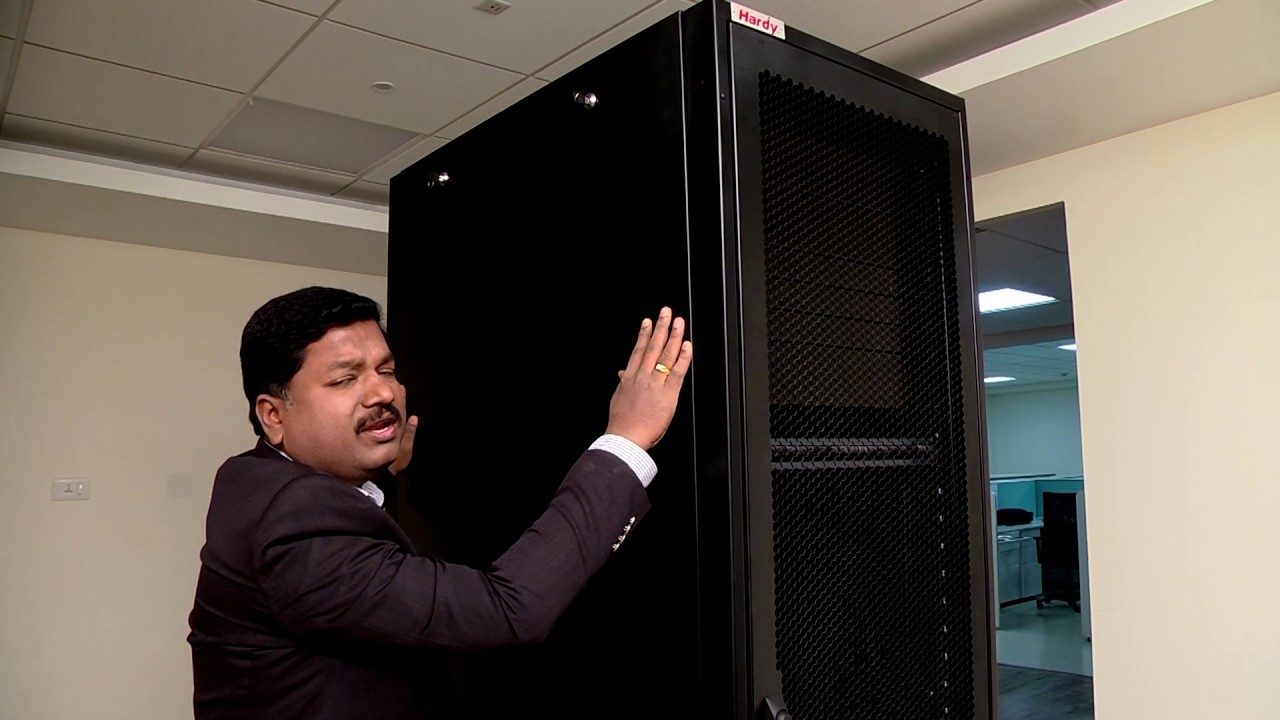
#hardy #server #rack #42U
Server Racks with 86% perforation, Numbered ‘U’ Positions, Tool less Removable front Doors, 7 Grounding Points, 5 Openings on Top and Bottom, Rear Split Doors, removable side panels.
#server #network #IT #technologies #rack #cable #accessories #locks #cooling #service
source
-

 Womens Workouts1 week ago
Womens Workouts1 week ago3 Day Full Body Women’s Dumbbell Only Workout
-

 Technology2 weeks ago
Technology2 weeks agoWould-be reality TV contestants ‘not looking real’
-

 Science & Environment2 weeks ago
Science & Environment2 weeks agoHow to unsnarl a tangle of threads, according to physics
-

 Science & Environment2 weeks ago
Science & Environment2 weeks agoMaxwell’s demon charges quantum batteries inside of a quantum computer
-

 Science & Environment2 weeks ago
Science & Environment2 weeks agoHyperelastic gel is one of the stretchiest materials known to science
-

 Science & Environment2 weeks ago
Science & Environment2 weeks ago‘Running of the bulls’ festival crowds move like charged particles
-

 News2 weeks ago
News2 weeks agoOur millionaire neighbour blocks us from using public footpath & screams at us in street.. it’s like living in a WARZONE – WordupNews
-

 Science & Environment2 weeks ago
Science & Environment2 weeks agoHow to wrap your mind around the real multiverse
-

 Science & Environment2 weeks ago
Science & Environment2 weeks agoLiquid crystals could improve quantum communication devices
-

 Science & Environment2 weeks ago
Science & Environment2 weeks agoSunlight-trapping device can generate temperatures over 1000°C
-

 Science & Environment2 weeks ago
Science & Environment2 weeks agoITER: Is the world’s biggest fusion experiment dead after new delay to 2035?
-

 Science & Environment2 weeks ago
Science & Environment2 weeks agoPhysicists are grappling with their own reproducibility crisis
-

 Science & Environment2 weeks ago
Science & Environment2 weeks agoQuantum ‘supersolid’ matter stirred using magnets
-

 News2 weeks ago
News2 weeks agoYou’re a Hypocrite, And So Am I
-

 Science & Environment2 weeks ago
Science & Environment2 weeks agoWhy this is a golden age for life to thrive across the universe
-

 Science & Environment2 weeks ago
Science & Environment2 weeks agoQuantum forces used to automatically assemble tiny device
-

 Sport2 weeks ago
Sport2 weeks agoJoshua vs Dubois: Chris Eubank Jr says ‘AJ’ could beat Tyson Fury and any other heavyweight in the world
-

 Science & Environment2 weeks ago
Science & Environment2 weeks agoCaroline Ellison aims to duck prison sentence for role in FTX collapse
-

 Science & Environment2 weeks ago
Science & Environment2 weeks agoNuclear fusion experiment overcomes two key operating hurdles
-

 Science & Environment2 weeks ago
Science & Environment2 weeks agoNerve fibres in the brain could generate quantum entanglement
-

 Science & Environment2 weeks ago
Science & Environment2 weeks agoTime travel sci-fi novel is a rip-roaringly good thought experiment
-

 Science & Environment2 weeks ago
Science & Environment2 weeks agoLaser helps turn an electron into a coil of mass and charge
-
News2 weeks ago
the pick of new debut fiction
-

 News2 weeks ago
News2 weeks agoIsrael strikes Lebanese targets as Hizbollah chief warns of ‘red lines’ crossed
-

 CryptoCurrency2 weeks ago
CryptoCurrency2 weeks agoCardano founder to meet Argentina president Javier Milei
-

 Science & Environment2 weeks ago
Science & Environment2 weeks agoMeet the world's first female male model | 7.30
-

 Womens Workouts2 weeks ago
Womens Workouts2 weeks agoBest Exercises if You Want to Build a Great Physique
-

 News2 weeks ago
News2 weeks agoWhy Is Everyone Excited About These Smart Insoles?
-
Business2 weeks ago
JPMorgan in talks to take over Apple credit card from Goldman Sachs
-

 Science & Environment2 weeks ago
Science & Environment2 weeks agoA slight curve helps rocks make the biggest splash
-

 News2 weeks ago
News2 weeks ago▶️ Media Bias: How They Spin Attack on Hezbollah and Ignore the Reality
-

 Science & Environment2 weeks ago
Science & Environment2 weeks agoQuantum time travel: The experiment to ‘send a particle into the past’
-

 Science & Environment2 weeks ago
Science & Environment2 weeks agoWhy we need to invoke philosophy to judge bizarre concepts in science
-

 CryptoCurrency2 weeks ago
CryptoCurrency2 weeks agoBitcoin miners steamrolled after electricity thefts, exchange ‘closure’ scam: Asia Express
-

 CryptoCurrency2 weeks ago
CryptoCurrency2 weeks agoDorsey’s ‘marketplace of algorithms’ could fix social media… so why hasn’t it?
-

 CryptoCurrency2 weeks ago
CryptoCurrency2 weeks agoDZ Bank partners with Boerse Stuttgart for crypto trading
-

 CryptoCurrency2 weeks ago
CryptoCurrency2 weeks agoBitcoin bulls target $64K BTC price hurdle as US stocks eye new record
-

 CryptoCurrency2 weeks ago
CryptoCurrency2 weeks agoLow users, sex predators kill Korean metaverses, 3AC sues Terra: Asia Express
-

 CryptoCurrency2 weeks ago
CryptoCurrency2 weeks agoEthereum is a 'contrarian bet' into 2025, says Bitwise exec
-

 Womens Workouts2 weeks ago
Womens Workouts2 weeks agoEverything a Beginner Needs to Know About Squatting
-

 News2 weeks ago
News2 weeks agoFour dead & 18 injured in horror mass shooting with victims ‘caught in crossfire’ as cops hunt multiple gunmen
-

 Womens Workouts1 week ago
Womens Workouts1 week ago3 Day Full Body Toning Workout for Women
-

 Travel1 week ago
Travel1 week agoDelta signs codeshare agreement with SAS
-

 Politics1 week ago
Politics1 week agoHope, finally? Keir Starmer’s first conference in power – podcast | News
-

 Health & fitness2 weeks ago
Health & fitness2 weeks agoThe maps that could hold the secret to curing cancer
-

 Science & Environment2 weeks ago
Science & Environment2 weeks agoFuture of fusion: How the UK’s JET reactor paved the way for ITER
-

 CryptoCurrency2 weeks ago
CryptoCurrency2 weeks agoRedStone integrates first oracle price feeds on TON blockchain
-

 Sport2 weeks ago
Sport2 weeks agoUFC Edmonton fight card revealed, including Brandon Moreno vs. Amir Albazi headliner
-

 CryptoCurrency2 weeks ago
CryptoCurrency2 weeks agoBlockdaemon mulls 2026 IPO: Report
-

 Technology2 weeks ago
Technology2 weeks agoiPhone 15 Pro Max Camera Review: Depth and Reach
-

 News2 weeks ago
News2 weeks agoBrian Tyree Henry on voicing young Megatron, his love for villain roles
-

 CryptoCurrency2 weeks ago
CryptoCurrency2 weeks agoCoinbase’s cbBTC surges to third-largest wrapped BTC token in just one week
-

 Servers computers1 week ago
Servers computers1 week agoWhat are the benefits of Blade servers compared to rack servers?
-

 Technology5 days ago
Technology5 days ago‘From a toaster to a server’: UK startup promises 5x ‘speed up without changing a line of code’ as it plans to take on Nvidia, AMD in the generative AI battlefield
-

 Health & fitness2 weeks ago
Health & fitness2 weeks agoThe secret to a six pack – and how to keep your washboard abs in 2022
-

 Science & Environment2 weeks ago
Science & Environment2 weeks agoBeing in two places at once could make a quantum battery charge faster
-

 Science & Environment2 weeks ago
Science & Environment2 weeks agoA new kind of experiment at the Large Hadron Collider could unravel quantum reality
-

 Science & Environment2 weeks ago
Science & Environment2 weeks agoHow one theory ties together everything we know about the universe
-

 Science & Environment2 weeks ago
Science & Environment2 weeks agoUK spurns European invitation to join ITER nuclear fusion project
-

 Science & Environment2 weeks ago
Science & Environment2 weeks agoHow do you recycle a nuclear fusion reactor? We’re about to find out
-

 Science & Environment2 weeks ago
Science & Environment2 weeks agoTiny magnet could help measure gravity on the quantum scale
-

 CryptoCurrency2 weeks ago
CryptoCurrency2 weeks agoCrypto scammers orchestrate massive hack on X but barely made $8K
-

 CryptoCurrency2 weeks ago
CryptoCurrency2 weeks agoTelegram bot Banana Gun’s users drained of over $1.9M
-

 CryptoCurrency2 weeks ago
CryptoCurrency2 weeks agoVonMises bought 60 CryptoPunks in a month before the price spiked: NFT Collector
-

 CryptoCurrency2 weeks ago
CryptoCurrency2 weeks ago‘No matter how bad it gets, there’s a lot going on with NFTs’: 24 Hours of Art, NFT Creator
-

 CryptoCurrency2 weeks ago
CryptoCurrency2 weeks agoSEC asks court for four months to produce documents for Coinbase
-
Business2 weeks ago
How Labour donor’s largesse tarnished government’s squeaky clean image
-

 News2 weeks ago
News2 weeks agoBrian Tyree Henry on voicing young Megatron, his love for villain roles
-

 Womens Workouts2 weeks ago
Womens Workouts2 weeks agoHow Heat Affects Your Body During Exercise
-

 Womens Workouts2 weeks ago
Womens Workouts2 weeks agoKeep Your Goals on Track This Season
-

 Science & Environment2 weeks ago
Science & Environment2 weeks agoCNN TÜRK – 🔴 Canlı Yayın ᴴᴰ – Canlı TV izle
-

 Technology1 week ago
Technology1 week agoRobo-tuna reveals how foldable fins help the speedy fish manoeuvre
-

 Science & Environment1 week ago
Science & Environment1 week agoX-rays reveal half-billion-year-old insect ancestor
-

 News2 weeks ago
News2 weeks agoChurch same-sex split affecting bishop appointments
-

 Technology2 weeks ago
Technology2 weeks agoFivetran targets data security by adding Hybrid Deployment
-

 CryptoCurrency2 weeks ago
CryptoCurrency2 weeks agoLouisiana takes first crypto payment over Bitcoin Lightning
-

 CryptoCurrency2 weeks ago
CryptoCurrency2 weeks ago$12.1M fraud suspect with ‘new face’ arrested, crypto scam boiler rooms busted: Asia Express
-

 CryptoCurrency2 weeks ago
CryptoCurrency2 weeks agoDecentraland X account hacked, phishing scam targets MANA airdrop
-

 CryptoCurrency2 weeks ago
CryptoCurrency2 weeks agoBitcoin price hits $62.6K as Fed 'crisis' move sparks US stocks warning
-

 CryptoCurrency2 weeks ago
CryptoCurrency2 weeks agoCertiK Ventures discloses $45M investment plan to boost Web3
-

 CryptoCurrency2 weeks ago
CryptoCurrency2 weeks agoBeat crypto airdrop bots, Illuvium’s new features coming, PGA Tour Rise: Web3 Gamer
-

 CryptoCurrency2 weeks ago
CryptoCurrency2 weeks ago‘Silly’ to shade Ethereum, the ‘Microsoft of blockchains’ — Bitwise exec
-

 CryptoCurrency2 weeks ago
CryptoCurrency2 weeks agoVitalik tells Ethereum L2s ‘Stage 1 or GTFO’ — Who makes the cut?
-

 CryptoCurrency2 weeks ago
CryptoCurrency2 weeks agoEthereum falls to new 42-month low vs. Bitcoin — Bottom or more pain ahead?
-
Business2 weeks ago
Thames Water seeks extension on debt terms to avoid renationalisation
-
Politics2 weeks ago
‘Appalling’ rows over Sue Gray must stop, senior ministers say | Sue Gray
-

 Politics2 weeks ago
Politics2 weeks agoLabour MP urges UK government to nationalise Grangemouth refinery
-

 News2 weeks ago
News2 weeks agoBrian Tyree Henry on his love for playing villains ahead of “Transformers One” release
-
Politics2 weeks ago
UK consumer confidence falls sharply amid fears of ‘painful’ budget | Economics
-

 Womens Workouts2 weeks ago
Womens Workouts2 weeks agoWhich Squat Load Position is Right For You?
-

 TV2 weeks ago
TV2 weeks agoCNN TÜRK – 🔴 Canlı Yayın ᴴᴰ – Canlı TV izle
-

 News7 days ago
News7 days agoUS Newspapers Diluting Democratic Discourse with Political Bias
-

 Politics2 weeks ago
Politics2 weeks agoTrump says he will meet with Indian Prime Minister Narendra Modi next week
-

 Technology2 weeks ago
Technology2 weeks agoIs carbon capture an efficient way to tackle CO2?
-

 Technology2 weeks ago
Technology2 weeks agoCan technology fix the ‘broken’ concert ticketing system?
-

 Science & Environment2 weeks ago
Science & Environment2 weeks agoSingle atoms captured morphing into quantum waves in startling image
-

 Science & Environment2 weeks ago
Science & Environment2 weeks agoHow Peter Higgs revealed the forces that hold the universe together
-

 Science & Environment2 weeks ago
Science & Environment2 weeks agoA tale of two mysteries: ghostly neutrinos and the proton decay puzzle
-

 CryptoCurrency2 weeks ago
CryptoCurrency2 weeks ago2 auditors miss $27M Penpie flaw, Pythia’s ‘claim rewards’ bug: Crypto-Sec
-

 CryptoCurrency2 weeks ago
CryptoCurrency2 weeks agoJourneys: Robby Yung on Animoca’s Web3 investments, TON and the Mocaverse

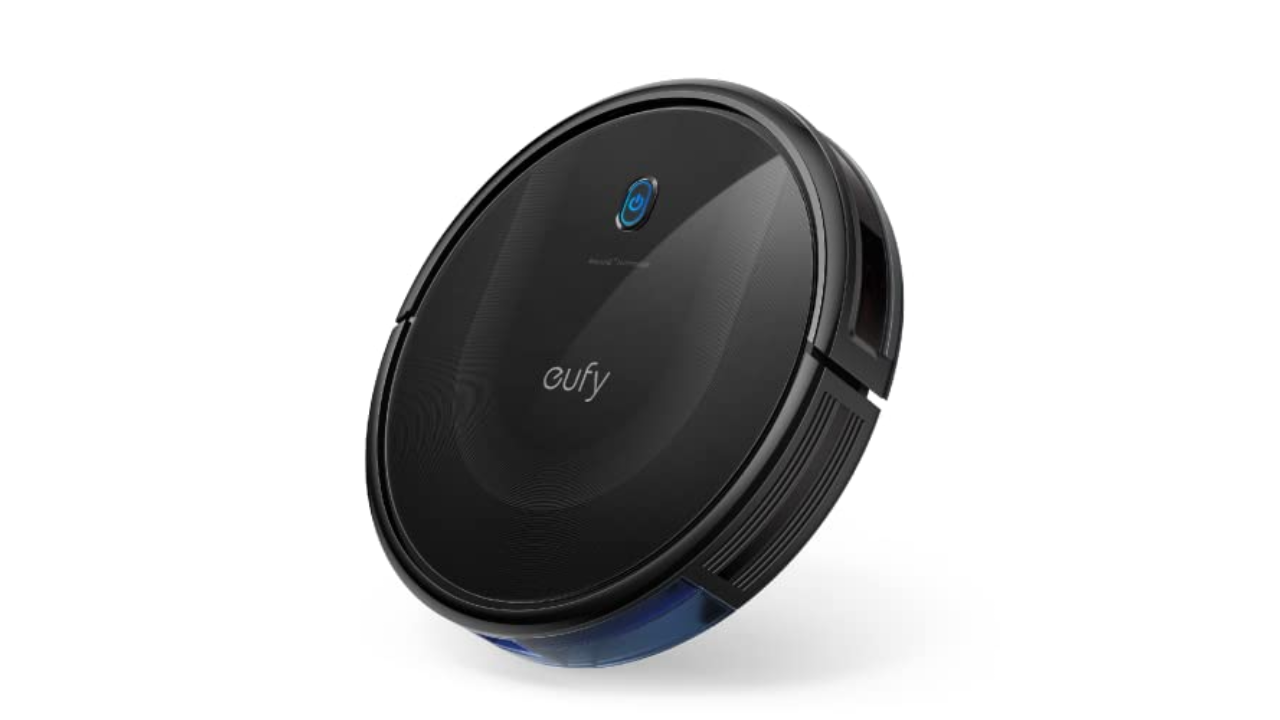

You must be logged in to post a comment Login